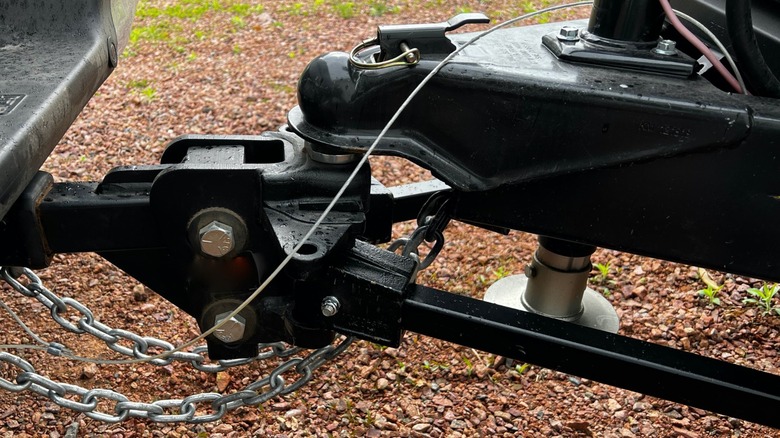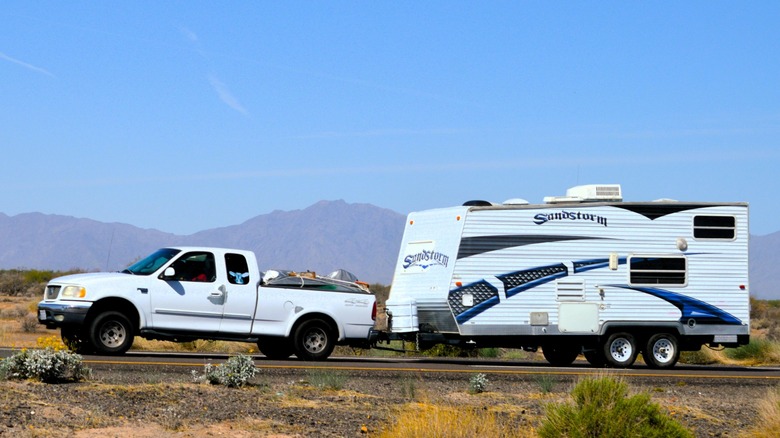What Is A Weight Distribution Hitch And When Should You Use One?
If you've already invested in one of the best travel trailer brands, it only makes sense to use the proper equipment when towing it. Regardless of what the RV salesperson told you or the fact that your new pickup has a maximum towing capacity that satisfies the 80% rule for towing your trailer, you probably need a weight distribution hitch (WDH). The consensus among trailer hitch pros is that if the trailer being towed weighs more than 50% of the tow vehicle's gross vehicle weight rating (GVWR), it's best to use a WDH. However, weight distribution hitches do not apply when towing with a fifth-wheel or gooseneck hitch, as they are only for conventional towing.
When the trailer is hitched to the tow vehicle, all of the trailer's tongue weight is transferred to the trailer hitch near the rear bumper. Heavy tongue weights can sag the rear of the tow vehicle and reduce weight on the front axle. This causes headlights to shine higher than desired and affects steering and braking control.
Weight distribution hitches employ a few different designs, but they all serve the same purpose. The goal of any WDH is to reduce the weight placed on the tow vehicle's rear axle by transferring some tongue weight back to the trailer's suspension and restoring weight to the front axle by leveling the tow vehicle.
Does A Weight Distribution Hitch Increase Towing Capacity?
While weight distribution hitches make the conventional towing of heavy trailers safer, they do not increase a vehicle's towing capacity. Maximum towing capacity is calculated by automakers taking all aspects of towing a trailer under optimal conditions into account.
Although a WDH reduces the weight placed on the rear axle of the vehicle, exceeding the maximum tow rating can lead to trouble when trying to stop, especially in an emergency. The extra weight is also hard on a vehicle's drivetrain, especially the transmission.
The trailer's GVWR includes the weight of the trailer and its cargo. For example, say your vehicle has a 10,000-pound maximum towing capacity, and you plan to tow a camper that has a published "Dry Weight" of 6,500 pounds and a GVWR of 8,000 pounds. In this scenario, you could safely load 1,500 of your belongings, gear, and supplies into the camper and stay within the 80% rule. However, that doesn't mean that all 1,500 pounds can go to one end or the other. You'll also need to consider your vehicle's payload capacity to be safe.
While it's sometimes difficult to calculate proper load distribution in a camper without weighing it before and after, it's preferred to evenly load a trailer from side to side while placing about 60% of the weight in front of the axles. It's also important to factor in the amount of water (fresh and waste) in a camper's storage tanks when calculating its GVWR.

